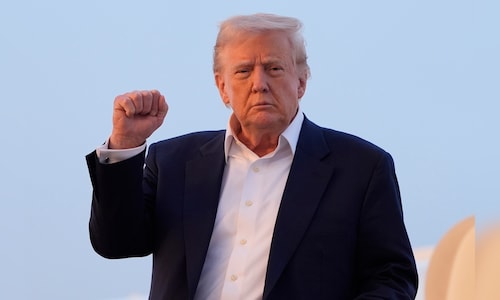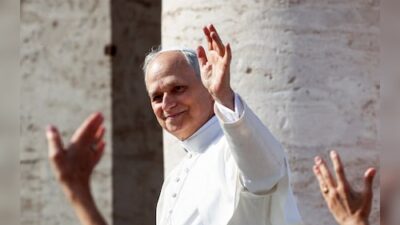Ferriday High is predominantly Black at 90%, while Vidalia High is 62% white.
For Black families, this stark contrast signals a message: “we’re not meant to enjoy the finer things,” remarked Brian Davis, a father from Ferriday. “It feels like our children are deemed unworthy,” he added.
Both schools belong to Concordia Parish, a district that was mandated to desegregate 60 years ago and still operates under a court-mandated plan. However, there’s increasing pressure to remove the district — and many others — from outdated orders that critics label as obsolete.
In a significant shift, the Justice Department announced intentions to begin dissolving court-ordered desegregation plans that have been in place since the Civil Rights Movement. Steps were taken in April when a 1960s mandate in Louisiana’s Plaquemines Parish was lifted. Harmeet Dhillon, who heads the department’s civil rights division, has indicated that other cases will also be reconsidered. This move follows calls from Republican Governor Jeff Landry and his attorney general to rescind all existing orders in the state, which they view as burdensome relics from a time when Black students were denied entry to certain schools.
The intent behind these orders was always temporary — districts can be released if they prove they have completely eradicated segregation. Yet, decades later, that goal remains out of reach, with pronounced racial imbalances still evident in many districts.
Civil rights organizations argue that maintaining these orders is crucial for addressing the legacy of enforced segregation, including inequalities in student discipline, academic offerings, and teacher recruitment. They highlight cases like Concordia, where the long-standing order helped prevent a charter school from favoring white students in its admissions process.
“Concordia is old, yet there’s a lot happening there,” stated Deuel Ross, deputy director of litigation for the NAACP Legal Defense Fund. “This is true for many of these cases; they are far from silent.” The ongoing debates over integration are unresolved. Last year, prior to President Donald Trump’s inauguration, Concordia Parish refused a Justice Department proposal intended to close its case by merging several predominantly white and predominantly Black elementary and middle schools.
During a town hall meeting, residents of Vidalia passionately opposed the plan, expressing concerns that it would disturb students’ lives and put their children at risk of exposure to drugs and violence. An official from the state attorney general’s office spoke against the initiative, suggesting that the Trump administration would likely revise older mandates.
Agreeing to the plan would have been a “death sentence” for the district, claimed Paul Nelson, a former Concordia superintendent. He predicted that white families would have moved to private schools or other districts, which is why he supports the removal of the court order.
“It’s time to move forward,” Nelson stated, having left the district in 2016. “We should focus on building the future, not dwelling on the past experiences of our grandparents.” At Ferriday High, athletic coach Derrick Davis endorsed the idea of merging schools in Ferriday and Vidalia. He pointed out that the district’s inequalities become evident when his teams visit schools with upgraded sports facilities.
“It seems to me that if we all combined, we could fulfill our needs together,” he mentioned.
Others are against merging schools if it’s merely for the sake of achieving racial balance. “Redistricting and attending unfamiliar locations would be a culture shock for some,” remarked Ferriday’s school resource officer, Marcus Martin, who, like Derrick Davis, is Black.
The present superintendent and school board of the district did not respond to requests for comments.
Federal mandates provide leverage for cases of racial discrimination. Concordia is one of over 120 districts across the South still under desegregation orders from the 1960s and ’70s, including roughly a dozen in Louisiana.
Labels such as “historical relics” are “unequivocally false,” asserted Shaheena Simons, who led the Justice Department section overseeing school desegregation cases until April.
“Segregation and inequality continue to exist in our schools, and they remain in districts still bound by desegregation orders,” she explained.
With these court orders active, families encountering discrimination can contact the Justice Department or seek court relief directly. Conversely, without these mandates, the only option becomes a lawsuit — a pursuit many families find unaffordable, according to Simons.
In Concordia, the order was pivotal in a dispute over a charter school that launched in 2013 on the grounds of a former all-white private institution. To safeguard the area’s progress toward racial integration, a judge directed Delta Charter School to establish a student body reflecting the district’s racial demographics. However, in its inaugural year, the school admitted only 15% Black students.
Following a court challenge, Delta was mandated to prioritize Black students in admissions. Today, roughly 40% of its student body is Black.
Recently, desegregation orders have been invoked in other cases across the state, leading to actions addressing disproportionately high discipline rates for Black students, and in another instance, a predominantly Black elementary school was relocated away from a hazardous chemical plant.
The Trump administration managed to close the Plaquemines case with minimal resistance, as the original plaintiffs were no longer involved — the Justice Department was proceeding with the case alone. Concordia and several other districts find themselves in a similar stance, making them susceptible to abrupt dismissals.
Concordia’s case commenced in 1965, amidst strict segregation and violent activities from a splinter group of the Ku Klux Klan. When Black families in Ferriday sought access to all-white schools, federal intervention was necessary.
As the district began to integrate, white families exited Ferriday. The schools began to embody the demographic characteristics of their communities. Ferriday is primarily Black and low-income, while Vidalia is largely white and benefits from revenue generated by a hydroelectric facility. A third town within the district, Monterey, has a high school that is 95% white.
During the December town hall, Vidalia resident Ronnie Blackwell described the area as having a “Mayberry vibe, which is wonderful,” alluding to the fictional Southern town from “The Andy Griffith Show.” He added that the federal government has “probably caused more harm to communities and school systems than it has aided.” Under its court order, Concordia must permit students in majority Black schools to transfer to majority white schools. It also submits reports on demographics of teachers and student discipline.
After failing to reach an agreement with the Justice Department, Concordia is set to argue that the judge should dismiss the order, as stated in court documents. Meanwhile, in the midst of numerous resignations within the federal government, only two lawyers from the Justice Department who were involved in the case remain.
Without court oversight, Brian Davis fears little hope for progress.
“Many parents here in Ferriday are trapped because they lack the resources to relocate their children,” he noted. “Schools like Ferriday are slipping into darkness, in my opinion.”



